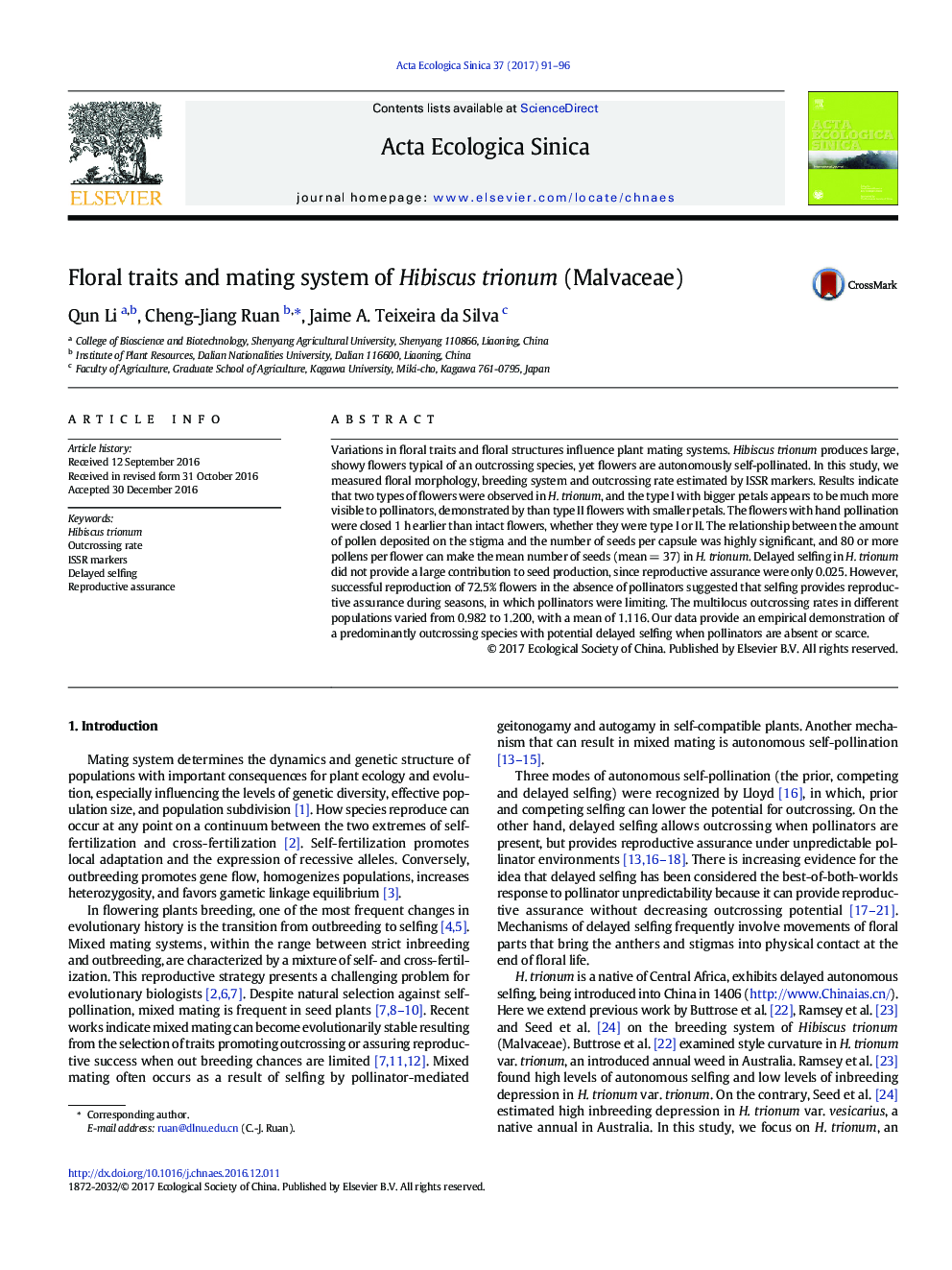| Article ID | Journal | Published Year | Pages | File Type |
|---|---|---|---|---|
| 8846390 | Acta Ecologica Sinica | 2017 | 6 Pages |
Abstract
Variations in floral traits and floral structures influence plant mating systems. Hibiscus trionum produces large, showy flowers typical of an outcrossing species, yet flowers are autonomously self-pollinated. In this study, we measured floral morphology, breeding system and outcrossing rate estimated by ISSR markers. Results indicate that two types of flowers were observed in H. trionum, and the type I with bigger petals appears to be much more visible to pollinators, demonstrated by than type II flowers with smaller petals. The flowers with hand pollination were closed 1 h earlier than intact flowers, whether they were type I or II. The relationship between the amount of pollen deposited on the stigma and the number of seeds per capsule was highly significant, and 80 or more pollens per flower can make the mean number of seeds (mean = 37) in H. trionum. Delayed selfing in H. trionum did not provide a large contribution to seed production, since reproductive assurance were only 0.025. However, successful reproduction of 72.5% flowers in the absence of pollinators suggested that selfing provides reproductive assurance during seasons, in which pollinators were limiting. The multilocus outcrossing rates in different populations varied from 0.982 to 1.200, with a mean of 1.116. Our data provide an empirical demonstration of a predominantly outcrossing species with potential delayed selfing when pollinators are absent or scarce.
Related Topics
Life Sciences
Agricultural and Biological Sciences
Ecology, Evolution, Behavior and Systematics
Authors
Qun Li, Cheng-Jiang Ruan, Jaime A. Teixeira da Silva,
